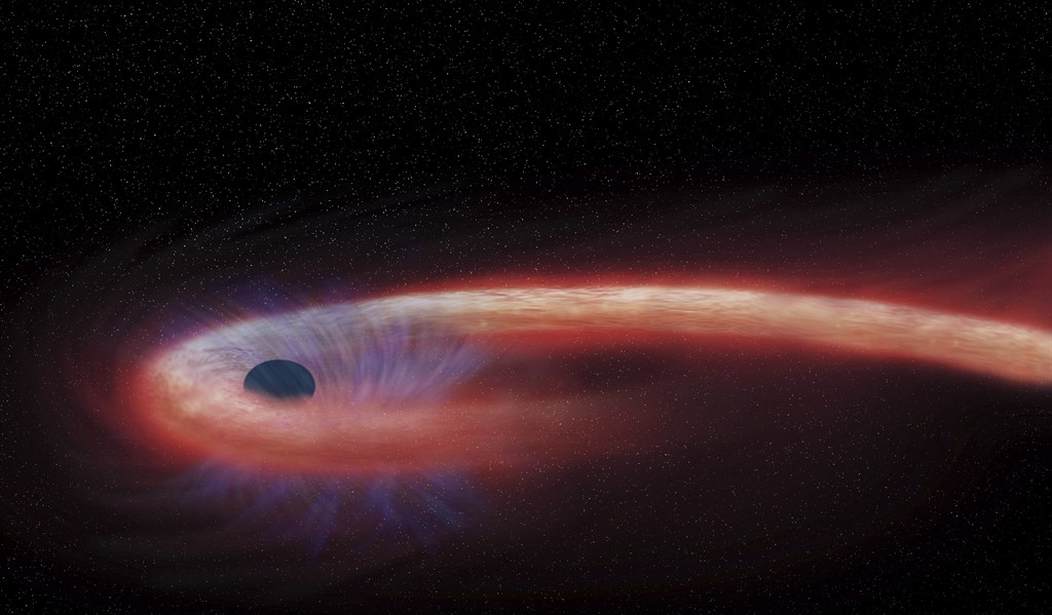In case you were looking for something offbeat to ponder (and possibly make your brain ache) this evening, there has been a series of strange announcements coming out of the science world recently. We’ve had scientists claiming to have created a wormhole, straight out of a science fiction movie. Of course, that was inside a simulation in a quantum computer and it was only two-dimensional, but it’s still pretty wild. Another group of researchers created a black hole that immediately began to glow. (Also a simulation.) And the most recent Nobel Prize for physics was awarded to a team that proved the existence of quantum entanglement, first postulated by Albert Einstein. That’s the enigma of objects being oddly correlated even when separated by vast distances.
It seems like much of the scientific community has become increasingly fixated on all things quantum lately. That’s so far over my head that I won’t even pretend to understand it all, but the bottom line for some of the laymen in the audience is that our universe is probably a lot weirder than how it’s traditionally been explained, and the fabric of reality might not be quite as solid as we’ve traditionally assumed. At the Daily Beast, professor of theoretical physics Heinrich Päs goes one step further and suggests that time and space are “illusions.” In explaining how this might be, he takes us back to the classic example of Schrodinger’s cat. See if you can follow along with this excerpt and understand where we’re heading.
What sounds perfectly ordinary when we talk about waves has the most bizarre consequences when applied to competing realities. If your neighbor told you she had two cats, one live cat and a dead one, this would imply that either the first cat or the second one is dead and that the remaining cat, respectively, is alive—it would be a strange and morbid way of describing one’s pets, and you may not know which one of them is the lucky one, but you would get the neighbor’s drift.
Not so in the quantum world. In quantum mechanics, the very same statement implies that the two cats are merged in a superposition of cases, including the first cat being alive and the second one dead and the first cat being dead while the second one lives, but also possibilities where both cats are half alive and half dead, or the first cat is one-third alive, while the second feline adds the missing two-thirds of life. In a quantum pair of cats, the fates and conditions of the individual animals get dissolved entirely in the state of the whole. Likewise, in a quantum universe, there are no individual objects. All that exists is merged into a single “One.”
All of this sounds fascinating but, at least for me, much of it remains undigestible. Time and space seem to fairly irrefutably exist. Yes, we know that time passes at different rates based on the speed you’re traveling and the relative mass of objects. But we don’t appear to have any real-world examples of it suddenly stopping or running backward. And space is just, well… space. We can only perceive it in three dimensions and you have to pass through it to get from point A to point B.
I suppose my point here is that all of these fascinating concepts being discussed in the linked article truly do sound amazing. But they all really only seem to exist inside simulations created in quantum computers. If your crazy neighbor tells you that she has two boxes, each with a cat in them, and one is alive while the other is dead, it’s not much of a mystery in the real world. After making a discrete call to animal control, you can just open the boxes. You will immediately know which cat is alive and which is dead. There is no room in our physical world for both cats to be half dead and half alive or any of the other suggestions put forth above.
There’s a group of scientists who are now claiming they are close to a breakthrough that will allow them to create an actual warp drive. (Again… straight out of Star Trek.) But as I understand the concept, a true warp drive would need to collapse the space in front of you while expanding the space behind you. Is that what this team believes can happen or are they just figuring out a way to go really fast? That would be useful, but we already understand the concept of motion, going either slowly or quickly. Warp drive would involve something that simply doesn’t sound as if it would be possible in the real world.
I’m not entirely sure what we’re being presented with amidst all of these scientific announcements and alleged breakthroughs. Is any of it real? Or are these still just scientific fantasies that we’re getting much better at simulating with increasingly sophisticated computers? The ground beneath my feet still feels comfortably solid to me. And I don’t put our cats in boxes unless they climb into one to take a nap. But if any of these geniuses actually comes up with a real wormhole that people can travel through, give me a call. I’d love to watch the first volunteer jump into it.







Join the conversation as a VIP Member